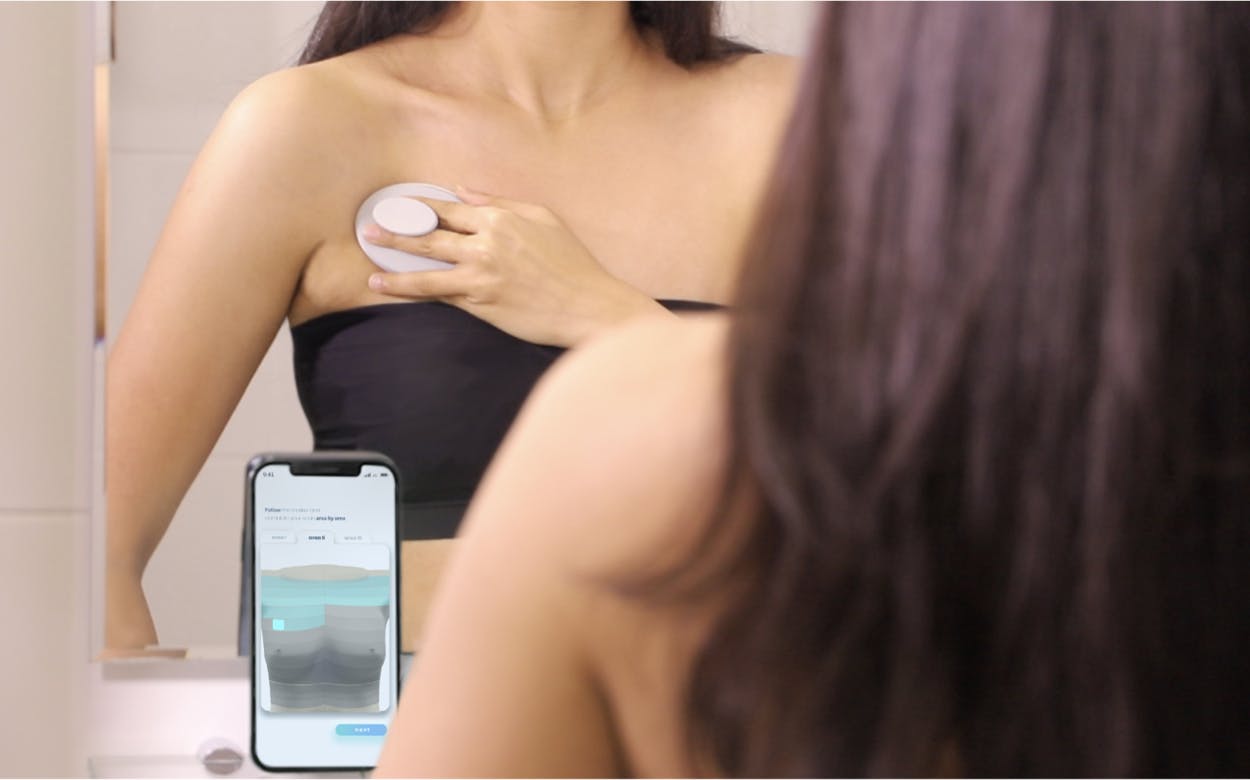Breast cancer screening at home
Dotplot, a small wearable device that allows women to screen themselves for breast cancer, has won this year's prestigious James Dyson Award.

The portable device is connected to a smartphone and intended to monitor changes in breast tissue. Users create a personal profile of their breast shape and take a guided reading once per month to create a map.
The Dotplot emits sound waves similar to ultrasound to detect the composition of the tissue. If suspicious changes or abnormalities are detected over time, the device alerts the user to see a healthcare professional.
Why early diagnosis is important
Breast cancer is a serious health issue. Every year, nearly 700,000 women worldwide die of breast cancer.
Last year, about 11,500 people died of breast cancer in the United Kingdom, or 32 per day. It is the second leading cause of cancer death in the UK. Nonetheless, many women fail to have their monthly checkups. This is partly due to a lack of education, but also to an ailing global healthcare system that cannot accommodate enough appointments.
Only 36% of women ages 18 to 35 examine their breasts monthly, and only 54% of women would see their doctor immediately if they discovered early signs and symptoms, according to coppafeel.org.
Guided self-diagnosis as a first step
When breast cancer is detected in its earliest stages, almost all women survive. The five-year survival rate for stage one breast cancer is about 90% in high-income countries, dropping to about 25% at stage four. So devices like Dotplot can make a big difference by giving women an easy way to get regular and accurate screenings.
But it is precisely the regularity and accuracy that is lacking in most cases. This is what the inventors of Dotplot, Debra Babalola and Shefali Bohra, explored in their research.
The team discovered that there are way too many different methods and conflicting information advising women to self-test. But what did not exist before were supporting products that can help women perform breast self-testing at home. So they built one.
Decentralized healthcare services
The device has not yet been approved. It's still in the early stages of development, so it does need to go through regulatory checks to make sure it is adequate at detecting breast cancers. It is not a substitute for a visit to the doctor.
But experiences in other areas, such as health data from smartwatches or the rise of glucose sensors, also attest to the incredible power of personal health data when collected specifically over a period of time.
Dotplot is part of a broader trend of shifting from the point of care to patients' homes to make them more involved.
We are confident that we will see similar developments in the near future. At the very least, Babalola and Bohra hope to further develop the device to use the technology to monitor other tissue changes, such as those associated with testicular cancer and soft tissue sarcomas.